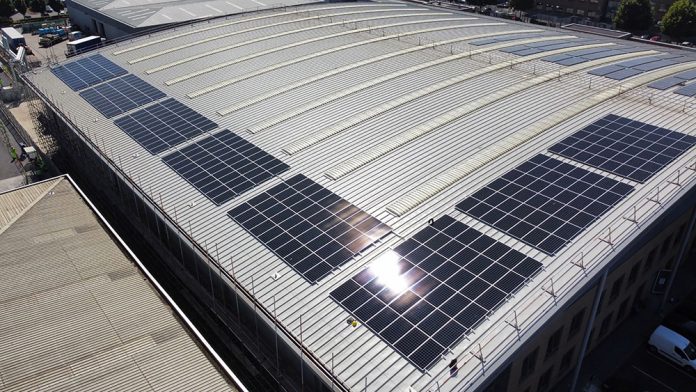By Stuart Patience, Head of Energy Solutions at Hollis
With the government net zero carbon targets to hit and ESG goals to achieve, it is no surprise that the use of renewables is becoming a key consideration for developers across real estate. Independent real estate consultants Hollis discusses how to mitigate risks and create solar strategies that are sustainable and safe.
Solar energy is on the rise
Solar power (PV) holds a multitude of benefits for commercial property owners, from industrial to residential. Unit prices are at an all-time low and pay-back on a PV system is shorter than ever, making the use of spare roof space a sound decision for both owners and occupiers.
With technology in renewables constantly advancing, solar energy is becoming a must to futureproof and add value to a building. As a renewable energy source, PV’s help to reduce bills, make buildings compliant and more rentable, hold low maintenance costs and can become a new revenue stream for landlords for 25-years. The valuation benefits can also be substantial, and it is a far more environmentally conscious way of generating energy, helping with ESG credentials.
Besides the financial and environmental benefits to solar energy, it may also provide a backup to securing electricity in a time where the National Grid is under strain. From the sharp uptake of electric vehicles to the reduction of coal power, the gradual societal shift to electrification requires a significant supply of electricity to meet the demand.
Despite its benefits, there are a few rare risks associated with solar panels which are increasingly coming to light as its usage increases.
Resolving risk from solar
The good news is that fire risk can be minimised by good system design, product selection and installation practices. Appointing consultants and contractors who are experts in their field, and who put fire safety first is therefore essential.
In fact, according to a BRE report (Fire and Solar PV systems, Instigations and Evidence), most fires have generally been caused from poor installation or the use of wrongly specified, incorrect or faulty equipment.
Additionally, utilising an optimised solar system to allow for each panel to be controlled independently allows for greater system performance and also a safer solar array that can automatically shut down the system to a safe voltage. This allows the fire brigade to safely access the roof and even link the PV to the existing fire alarm system.
However, it isn’t just the initial installation and short-term operation which requires fire safety precautions. Safety in the long-term can only be guaranteed through maintenance. Owners of PV’s should be undertaking an annual service for optimum efficiency and to quickly identify and rectify system faults. Whilst unlikely, and in theory solar panels do not require frequent service, maintenance will ultimately benefit property owners and occupiers.
Moving forward
The use of solar PV is a viable option for commercial property owners looking to increase the sustainability credentials of their asset and assisting tenant’s energy costs. It is however essential to understand the risks associated with PV’s, especially those surrounding fire, and take the necessary precautions to mitigate this risk.
Visit hollisglobal.com for further information






